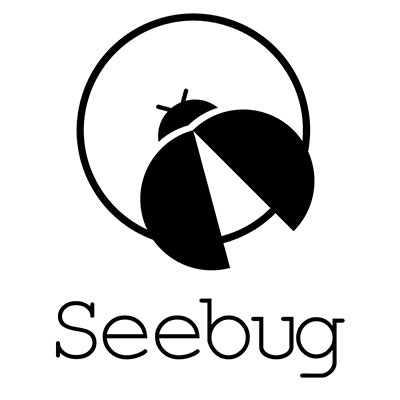# ICS Advisory (ICSA-20-196-04)
## Siemens SIMATIC HMI Panels
Original release date: July 14, 2020
[Print Document](javascript:window.print\(\);)
[Tweet](https://twitter.com/share?url=https%3A%2F%2Fus-
cert.cisa.gov%2Fics%2Fadvisories%2Ficsa-20-196-04)
[Like Me](https://www.facebook.com/sharer.php?u=https%3A%2F%2Fus-
cert.cisa.gov%2Fics%2Fadvisories%2Ficsa-20-196-04)
[Share](http://www.addthis.com/bookmark.php?url=https%3A%2F%2Fus-
cert.cisa.gov%2Fics%2Fadvisories%2Ficsa-20-196-04)
### Legal Notice
All information products included in [https://us-cert.gov/ics](/ics) are
provided "as is" for informational purposes only. The Department of Homeland
Security (DHS) does not provide any warranties of any kind regarding any
information contained within. DHS does not endorse any commercial product or
service, referenced in this product or otherwise. Further dissemination of
this product is governed by the Traffic Light Protocol (TLP) marking in the
header. For more information about TLP, see [https://www.us-
cert.gov/tlp/](/tlp/).
* * *
## 1\. EXECUTIVE SUMMARY
* **CVSS v3 5.7**
* **ATTENTION:** Exploitable remotely/low skill level to exploit
* **Vendor:** Siemens
* **Equipment:** SIMATIC HMI Panels
* **Vulnerability:** Cleartext Transmission of Sensitive Information
## 2\. RISK EVALUATION
Successful exploitation of this vulnerability could allow an attacker to
access sensitive information under certain circumstances.
## 3\. TECHNICAL DETAILS
### 3.1 AFFECTED PRODUCTS
The following Siemens products are affected:
* SIMATIC HMI Basic Panels 1st Generation (incl. SIPLUS variants): All versions
* SIMATIC HMI Basic Panels 2nd Generation (incl. SIPLUS variants): All versions
* SIMATIC HMI Comfort Panels (incl. SIPLUS variants): All versions
* SIMATIC HMI KTP700F Mobile Arctic: All versions
* SIMATIC HMI Mobile Panels 2nd Generation: All versions
* SIMATIC WinCC Runtime Advanced: All versions
### 3.2 VULNERABILITY OVERVIEW
#### 3.2.1 [CLEARTEXT TRANSMISSION OF SENSITIVE INFORMATION
CWE-319](https://cwe.mitre.org/data/definitions/319.html)
Unencrypted communication between the configuration software and the
respective device could allow an attacker to capture potential plain text
communication and have access to sensitive information.
[CVE-2020-7592](http://web.nvd.nist.gov/view/vuln/detail?vulnId=CVE-2020-7592)
has been assigned to this vulnerability. A CVSS v3 base score of 5.7 has been
calculated; the CVSS vector string is
([AV:A/AC:L/PR:N/UI:R/S:U/C:H/I:N/A:N](https://www.first.org/cvss/calculator/3.0#CVSS:3.0/AV:A/AC:L/PR:N/UI:R/S:U/C:H/I:N/A:N)).
### 3.3 BACKGROUND
* **CRITICAL INFRASTRUCTURE SECTORS:** Chemical, Energy, Food and Agriculture, Water and Wastewater Systems
* **COUNTRIES/AREAS DEPLOYED:** Worldwide
* **COMPANY HEADQUARTERS LOCATION:** Germany
### 3.4 RESEARCHER
Richard Thomas and Tom Chothia of the University of Birmingham reported this
vulnerability to Siemens.
## 4\. MITIGATIONS
Siemens has identified the following specific workarounds and mitigations
users can apply to reduce the risk:
* Avoid program transfer over large networks to prevent an attacker from sniffing potential unencrypted traffic.
* As much as possible, connect the engineering station (or device with the WinCC engineering software) directly to the HMI without using any network device in between.
As a general security measure, Siemens strongly recommends protecting network
access to devices with appropriate mechanisms. In order to operate the devices
in a protected IT environment, Siemens recommends configuring the environment
according to the [Siemens operational guidelines for Industrial
Security](https://cert-portal.siemens.com/operational-guidelines-industrial-
security.pdf) and following the recommendations in the product manuals.
For additional information, please refer to Siemens Security Advisory
[SSA-364335](https://cert-portal.siemens.com/productcert/pdf/ssa-364335.pdf)
CISA recommends users take defensive measures to minimize the risk of
exploitation of this vulnerability. Specifically, users should:
* Minimize network exposure for all control system devices and/or systems, and ensure that they are [not accessible from the Internet](https://www.us-cert.gov/ics/alerts/ICS-ALERT-10-301-01).
* Locate control system networks and remote devices behind firewalls, and isolate them from the business network.
* When remote access is required, use secure methods, such as Virtual Private Networks (VPNs), recognizing that VPNs may have vulnerabilities and should be updated to the most current version available. Also recognize that VPN is only as secure as the connected devices.
CISA reminds organizations to perform proper impact analysis and risk
assessment prior to deploying defensive measures.
CISA also provides a section for [control systems security recommended
practices](https://www.us-cert.gov/ics/recommended-practices) on the ICS
webpage on [us-cert.gov](https://www.us-cert.gov/ics). Several recommended
practices are available for reading and download, including [Improving
Industrial Control Systems Cybersecurity with Defense-in-Depth
Strategies](https://www.us-
cert.gov/sites/default/files/recommended_practices/NCCIC_ICS-
CERT_Defense_in_Depth_2016_S508C.pdf).
Additional mitigation guidance and recommended practices are publicly
available on the [ICS webpage on us-cert.gov](https://www.us-cert.gov/ics) in
the Technical Information Paper, [ICS-TIP-12-146-01B--Targeted Cyber Intrusion
Detection and Mitigation Strategies](https://www.us-cert.gov/ics/tips/ICS-
TIP-12-146-01B).
Organizations observing any suspected malicious activity should follow their
established internal procedures and report their findings to CISA for tracking
and correlation against other incidents.
No known public exploits specifically target this vulnerability.


暂无评论